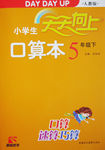题目内容
Many changes are taking place in the way in which men and women look at their roles in society.We see these roles most dramatically(戏剧性地) in job and business situations.It is no longer 1 to find a male nurse or a female construction worker.Years 2 , however,a man who worked as a nurse would have been ? 3 ? down upon for doing “a woman's job”,and a female construction worker would have been ? 4 ? off the construction site by her male coworkers.? 5 ? dramatic these changes are,they are not as 6 ? as the changes that have taken place between men's and women's roles in 7 ? life.?The fact that so many women today have 8 the job market and are 9 independent career(生涯) for themselves has 10 the traditional family structure in many ways.For one thing,household work that 11 to be done by women is now often 12 ?equally by men and women.Men have discovered 13 ? that they too are capable of preparing the family dinner, 14 than thinking that they are only capable of taking out the 15 .?
Perhaps the greatest change 16 has taken place in the family is in parent's new 17 toward bringing up children.While it is true that only mothers can breastfeed their own babies, 18 is it written that fathers cannot bathe their own babies or change diapers(尿布).And more and more of them are doing 19 that.These days,being a fulltime 20 is a job that fathers and mothers both share.?
1.A.different B.frequent ?
C.unusual D.extraordinary?
2.A.ago B.before?
C.later D.earlier?
3.A.set B.regarded?
C.looked D.forced?
4.A.cut B.driven?
C.kept D.turned?
5.A.What B.Though?
C.Very D.However?
6.A.serious B.important?
C.good D.difficult?
7.A.daily B.family?
C.spare time D.city?
8.A.found B.liked?
C.appreciated D.entered?
9.A.building B.seeking?
C.making D.expecting?
10.A.produced B.developed?
C.changed D.shaken
11.A.used B.had?
C.needed D.ought?
12.A.done B.divided?
C.preferred D.shared?
13.A.at least B.at best?
C.at last D.at most?
14.A.better B.rather?
C.more D.wiser?
15.A.rubbish B.money?
C.meals D.papers?
16.A.which B.what?
C.that D.as?
17.A.attitudes B.feelings?
C.opinions D.roles?
18.A.anywhere B.nowhere?
C.somewhere D.everywhere?
19.A.ever B.even?
C.only D.just?
20.A.trainer B.nurse?
C.helper D.parent?
解析:

 天天向上口算本系列答案
天天向上口算本系列答案
| |||||||||||||||||||||||||||||||||||||||||||||||||||||||||||||||||||||||||